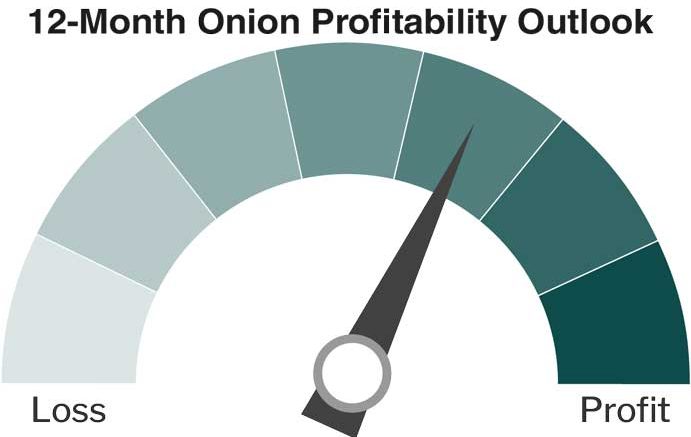|
Click to listen to this article
|
Profitability in 2023 will depend on growing conditions and moisture. Producers with larger sized onions in storage are well positioned to capture higher prices given lower yields and shorter 2022 onion inventories across the Northwest. Ongoing supply chain and input costs challenges will create headwinds for producer profitability.
Industry drivers
Supply chain and input cost challenges
Tight rail and trucking capacity issues continue, and energy and labor costs remain elevated relative to pre-pandemic levels (see Crop Inputs Snapshot). Headline inflation was 6.5% in 2022, while producers on average had an 18.8% increase in farm expenses with Northwest onion growers paid higher overall expenses across nearly all inputs.
Strong sales prices
Market demand has been steady, and shipping increased at the start of 2023 following a slower than average December. Onion growers are shipping 15%-20% fewer onions than during a typical season. Lower supply is benefiting onion prices and helping mitigate demand for the smaller 2022-23 crop. Competition amongst growers softened prices between September and January. Buyers are purchasing jumbos or larger onions and quality of onions in storage remains good. As Northwest shippers work through remaining onions in storage, larger sized onions will become scarcer. Some buyers are hesitant about Northwest prices as the upcoming Texas and Mexican crop entering the market (typically in Mid-February). White and reds in the Northwest could face price pressure once Mexican onions enter the market.
Lower yields and stocks on hand
In Idaho’s Treasure Valley, yields were down about 20% due to wet, cold spring weather that caused a three-to-four-week planting delay. Summertime heat affected size profiles, leading to mostly medium to jumbo onions and few colossal or larger. Lower yields and less acres planted have led to fewer stocks on hand for packing sheds. The Columbia Basin also experienced lower onion yields, but to a lesser extent than Idaho.
Inflation and consumer demand for onions
Restaurant demand tends to serve as a proxy for onion demand. With looming economic uncertainties, restaurant sales have started to soften but remain above prior year levels. If restaurant demand weakens, onion sales may also see some declines.
Profitability
Onion production costs have risen to double their pre-pandemic levels due to inflation, supply chain challenges, and fuel costs. In nominal dollars, 2022 farm production expenses experienced record increases, up 18.8% annually. Growers will need strong onion prices to remain profitable in 2023, but commodity prices often respond quicker to downward price pressure than input costs. If onion prices soften to historic averages, producers should closely manage production costs to maintain profitability.

